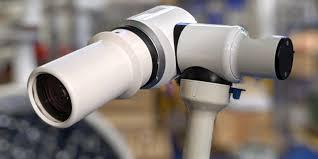Medical Camera Market Growth Challenges Slowing Global Expansion and Technology Penetration

The medical camera market has become an integral part of modern healthcare, revolutionizing diagnostics, surgeries, and real-time monitoring. However, despite steady technological advancements and growing demand, the industry faces numerous challenges that continue to slow its overall growth trajectory. These challenges—ranging from pricing constraints and regulatory burdens to skill gaps and infrastructure issues—are impeding the market’s ability to scale globally and equitably.
1. High Cost and Limited Budget Allocation
A primary growth challenge in the medical camera market is the high cost of acquiring advanced equipment. High-definition imaging systems with AI integration and robotic assistance can cost tens of thousands of dollars. For hospitals in cost-sensitive regions or operating under constrained budgets, this acts as a significant barrier.
Additionally, recurring expenditures such as system maintenance, software upgrades, and accessories increase the total cost of ownership, deterring buyers from investing in new solutions. Many healthcare institutions prioritize essential life-saving equipment over high-tech imaging systems, slowing demand in budget-limited environments.
2. Regulatory Complexity and Approval Delays
The global medical device landscape is governed by strict regulatory frameworks that vary from one country to another. Navigating approvals from agencies like the FDA (U.S.), MDR (Europe), or NMPA (China) involves time-intensive clinical testing and documentation.
Delays in regulatory approval hamper the timely launch of new products, forcing manufacturers to miss critical market opportunities. For small and mid-sized enterprises, the high cost of compliance and the complexity of multi-region certification stifles innovation and limits global expansion.
3. Shortage of Trained Medical Professionals
Another critical bottleneck is the limited availability of trained medical professionals capable of using advanced medical cameras. Modern systems often come with AI-based software, real-time image processing, or robotic integration, which require specialized training.
In many regions, especially in developing countries, healthcare personnel lack the experience and access to training programs necessary for the effective use of such systems. This slows down adoption rates and undermines the utility of even the most advanced camera technologies.
4. Interoperability and Integration Issues
Medical cameras need to seamlessly integrate with other healthcare IT systems like PACS (Picture Archiving and Communication Systems), EMRs (Electronic Medical Records), and surgical navigation platforms. However, the lack of universal standards in hardware and software creates significant integration challenges.
Healthcare facilities often deal with a mix of legacy and modern systems, making interoperability a complex and costly affair. This not only increases implementation time and cost but also discourages facilities from upgrading their imaging infrastructure, further slowing market growth.
5. Limited Market Penetration in Emerging Economies
Despite a growing need for quality healthcare, emerging economies have yet to fully adopt advanced medical camera technologies. High import tariffs, weak distribution networks, and inconsistent government healthcare spending all contribute to under-penetration in these regions.
Many manufacturers focus their resources on developed markets, neglecting high-potential but underserved areas like Africa, South Asia, and parts of Latin America. This limits the global scale of the market and leaves millions without access to advanced imaging solutions.
6. Rapid Technological Obsolescence
The medical imaging sector evolves quickly, with frequent product upgrades and next-gen innovations emerging every few years. While this benefits end-users with cutting-edge features, it also creates hesitancy among buyers.
Healthcare providers often postpone purchasing decisions in anticipation of better, cheaper, or more advanced systems. This "technology wait" syndrome hampers short-term sales and makes it difficult for companies to project long-term demand.
7. Lack of Reimbursement Support
In many countries, insurance and public healthcare reimbursement policies do not yet fully cover the use of advanced medical imaging technologies. This creates an adoption bottleneck, particularly for outpatient diagnostic centers and small clinics.
Without guaranteed reimbursement, providers are reluctant to invest in costly imaging systems, even when they can significantly improve diagnostic accuracy or procedural efficiency. Until clear reimbursement frameworks are established, this remains a formidable growth obstacle.
8. Cybersecurity and Data Privacy Concerns
As medical camera systems become more connected to cloud platforms and AI tools, they also become more vulnerable to cybersecurity threats. Hospitals are increasingly cautious about introducing internet-connected devices that could expose sensitive patient data.
Ensuring end-to-end encryption, secure firmware, and compliance with data protection laws like HIPAA and GDPR requires ongoing investment. Not all manufacturers can meet these demands, leading to slower adoption in institutions with strict data security policies.
Conclusion
The medical camera market is rich with technological promise, but its growth is being hindered by a host of interconnected challenges. From financial constraints and regulatory delays to training shortages and cybersecurity concerns, the market must overcome several structural issues to achieve sustained, global expansion. By addressing these barriers through innovation, collaboration, and supportive policy development, stakeholders can unlock the next phase of growth—ensuring medical imaging reaches its full potential in enhancing patient care across every healthcare setting.
- Art
- Causes
- Crafts
- Dance
- Drinks
- Film
- Fitness
- Food
- Games
- Gardening
- Health
- Home
- Literature
- Music
- Networking
- Other
- Party
- Religion
- Shopping
- Sports
- Theater
- Wellness


